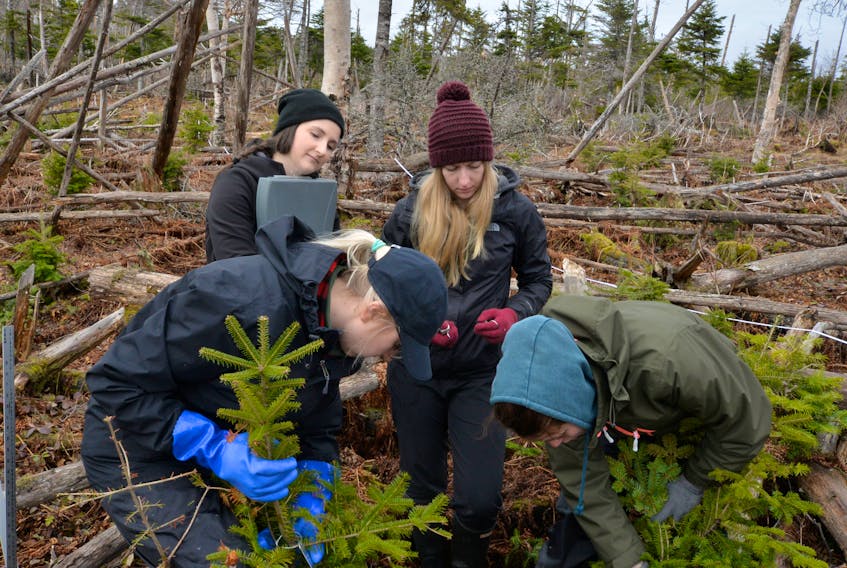After coming to western Newfoundland to conduct scientific research, Lauren McLaren has discovered two things.
Firstly, she has fallen in love with the place. Secondly, she is intrigued by the peculiar eating habits of moose.
McLaren was among a group of students from Nipissing University in Ontario who spent two weeks in Gros Morne National Park last summer. The students participated in an annual biology field course offered by the university and is part of an ongoing project assessing forest regeneration in Newfoundland.
Her instructor, associate professor of biology/environmental science Peter Nosko, has been working with biologists in Gros Morne National Park on the problem of forest regeneration failure due to the large moose population found in the park.
The scientists have been noticing areas of the forest regenerating right next to areas that have been heavily browsed by moose.
Why a moose might eat one balsam fir tree but not the one next to it has become a perplexing issue.
“I became fascinated with this question of why this was happening,” said McLaren.
For 10 days this past April, McLaren was part of another group from Nipissing University that returned to Gros Morne to conduct more research.
They came in spring before the growing season so it would be easier to tell if moose had browsed certain trees over the winter. That would have been harder to document at the end of the summer after months of regeneration.
Examining how physical, chemical and biological factors associated with individual balsam fir saplings influence whether a moose chooses to browse that particular sapling is now a part of McLaren’s fourth-year honours’ thesis.
“I’m in the process of inputting all the data collected into electronic form so we can start analyzing it to look for patterns and trying to determine factors that would influence moose browsing,” she said.
There is another group from Nipissing heading to Gros Morne to continue the moose research in August.
Fellow student Brianna Dumas will be returning to collect data for her honours’ thesis. Her work will examine the degree to which forests in Gros Morne National Park are recovering following a seven-year period of moose population control through hunting, a drastic measure not normally allowed in a national park.
McLaren hasn’t ruled out returning this summer, but the timing of the next visit will conflict with the start of fall semester classes and will likely keep her from coming.
There is still some chemical data she would like to have for her thesis research. If she can’t get that in person, she will get someone who is coming in August to help her out.
If she doesn’t come back for another scientific mission, McLaren would like to return to Newfoundland as a tourist someday.
“I was pretty impressed with what I saw, she said. “Maybe my next goal will be to come back and not be so focused on research.”
Moose densities in the Gros Morne National Park area have been the highest in the world, resulting in only a quarter of the forested landscape being able to regenerate after a disturbance. If an outbreak of spruce budworm, for example, kills mature trees, there are no saplings in the understorey to replace the forest canopy due to intense selective browsing by moose.
Generally, large herbivores like moose tend to avoid evergreen species such as fir. However, in Newfoundland, balsam fir accounts for more than 90 per cent of the moose winter diet. Not all saplings are vulnerable: moose will strip one fir sapling and leave an adjacent sapling untouched. Understanding how ecological neighborhoods influence moose browsing behavior will help Park managers in their efforts to restore the forests of Gros Morne National Park.
Source: Nipissing University









